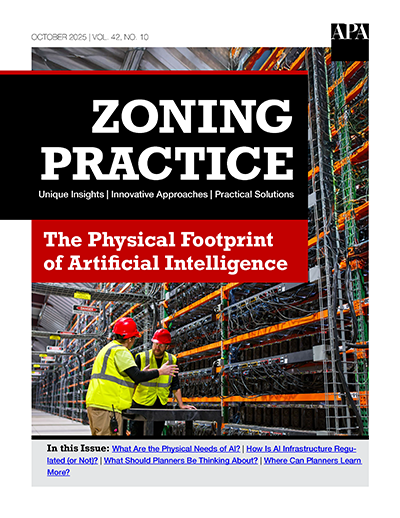The Physical Footprint of Artificial Intelligence
Zoning Practice — October 2025
By Charlie Nichols, AICP

Every time you ask ChatGPT, Gemini, or Claude a question, you are tapping into a sprawling, power‑hungry network of machines. Somewhere, a data center’s processors are whirring, fans are spinning, and megawatts of electricity are flowing.
Artificial intelligence (AI) may feel virtual, but its footprint is intensely physical. Behind every chatbot interaction, predictive algorithm, or autonomous system lies a vast network of data centers, power generators, and electricity transmission and distribution infrastructure. As vast as it is now, the demand for computing power is growing at an exponential rate, and local zoning is on the front lines.
This issue of Zoning Practice explores the physical effects of AI deployment and highlights core considerations for local planning and zoning. It begins with a summary of the land use characteristics of the system of data centers that host and serve contemporary AI models before highlighting noteworthy regulatory approaches and areas of opportunity for zoning updates and land use decision-making processes.
Details
About the Author
Charlie Nichols, AICP
Charlie Nichols is the Director of Planning and Development for Linn County, Iowa. He recieved his Masters degree in Urban and Regional Planning from the University of Iowa, and has been working in the field of planning for ten years.


